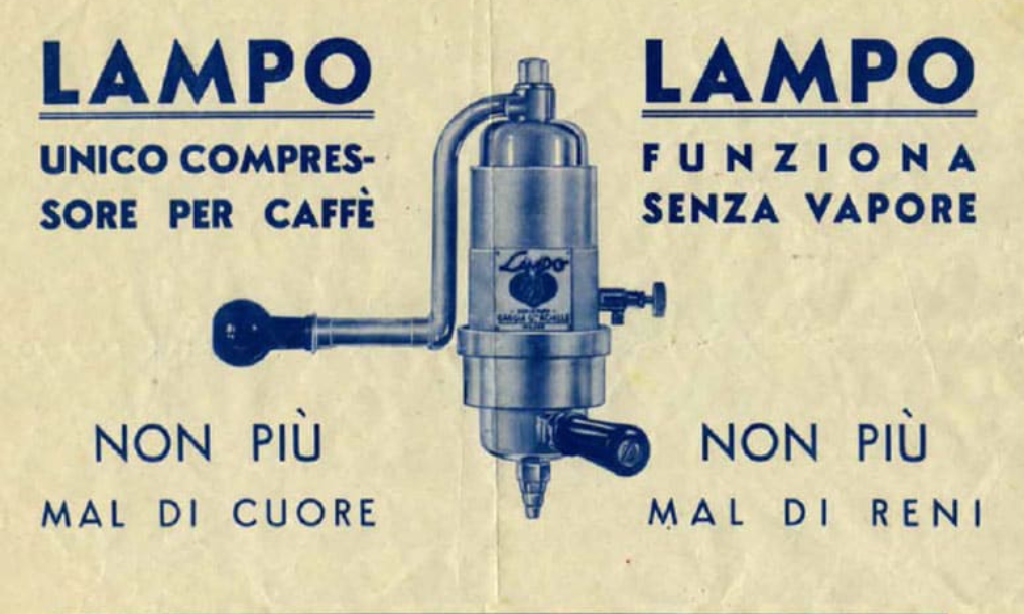History of coffee: from the origins to the last evolutions

Coffee has come into the use and custom of each nation and created its own habits by declining itself in different types of preparations, offers and rituals of consumption. From the Italian espresso to the American coffee, from the Spanish cortado to cafè au lait… nowadays there are many versions of this drink.
But, what are the origins of coffee? What is the story of its diffusion? How did Italian people come to what we now define as “espresso”? Let’s discover it together!
The origins of coffee
The first tales about the origins of coffee are mythical and dated back to 500 AD in Ethiopia. Some legends tell that a shepherd discovered the properties of coffee berries when he noticed that his goats, after eating them, became hyperactive.
Coffee plants were widespread mainly in the Kaffa region, from which coffee probably takes its name. There, the Galla indigenous tribe used to produce edible and energetic solutions by mixing coffee seeds and berries with animal fat.
With the Ethiopian military campaign towards the East, between the XIII and the XIV centuries, the coffee plant reached Yemen. Once there, it found a good ground to grow, and spread across the Red Sea to get to Mecca and Medina.
Then, the coffee plant got in touch with the Arabian culture and started to be used in a different way, for long decoctions to drink.
Around 1200 AD, thanks to someone’s idea, coffee changed again its definition. We could say that the one who thought to roast the coffee beans and to grind them after boiling them in water – thus obtaining a more pleasant taste – was the inventor of the real coffee formula. Unfortunately, his name has vanished from History.
Over the centuries, coffee diffused more and more. The first “coffee shops” in history appeared in Arabia and Turkey, and then arrived in Italy on the ships of the Venetians merchants.
History of coffee in Italy
According to the history of coffee, this beverage entered the Italian culture during the age of the Maritime Republics.
Back in time, the Venetian Republic was in conflict with the other Republics for the hegemony over the seas and the control over trades. In 1571, it had to fight with the other European powers against the Ottoman Empire in the famous Battle of Lepanto.
The battle was a victory for the Republic of Venice, thanks to the support of the Holy League, but weakened its trade dominance over the Mediterranean Sea.
That’s why the Venetians merchants had to find new trades and commerce activities, so they started to buy coffee loads from the Ottomans,to take them to Italy.
Coffee trade in Italy started years ago, in 1615, and it will last for the next centuries. The most ancient coffee shop in Europe is “Caffè Florian”, located in St. Mark Square, Venice, founded in 1720.
The history of espresso
Coffee took hold very fast in Italy and became very popular as a delicious and prestigious drink, appreciated in the most aristocratic courts in Italy.
But, how did we get to espresso?
We need to wait until the XIX century, for this new all-Italian version of the beverage.
The history of espresso starts in the city of Turin in the late 1800s, thanks to the special invention of a machine patented by Angelo Moriondo in 1884.
This machine was revisited in 1901 by the Milanese Luigi Bezzera, who introduced it to business operators and to the press, making its distribution possible.
Afterwards, the espresso machine was produced and marketed in series thanks to important people like Desiderio Pavoni and Pier Teresio Arduino.
Then, a revolution happened in 1938. The Milanese barista Achille Gaggia filed the patent n. 365726 for the “Lampo” system and the modern era of the Italian Espresso began.
While the previous coffee machines used hot steam to extract coffee, burning it and producing a very bitter beverage, Gaggia introduced an innovative piston mechanism. In 1947, this invention was perfected with the second patent filed by Achille: the piston was powered by a lever system, which allowed a better extraction. This system used hot water pressure to extract coffee oils and aromas, resulting in a new and delicious drink, characterized by a beautiful layer of natural “crema” (cream) on top. It was the first appearance of the “Italian espresso”!
After a first hesitation, Milanese people lined up in endless queues in front of the best cafés and bars in the city. Everyone wanted to taste this new version of what would become the Italians’ signature drink.
Nowadays
The Italian espresso crossed time and became the symbol of a lifestyle. Over the years, the coffee ritual evolved, along with the consumers’ needs.
Nowadays, Achille Gaggia’s vision is represented by the strength and skills of Gaggia Milano, that designs and produces espresso machines made to create unique “coffee moments”. Today, when preparing and enjoying coffee, the person wants to feel protagonist of this experience, balancing tradition and curiosity to experiment. The “coffee moment” is one of pleasure, aggregation, conviviality, but also of study and discovery. This is what Achille identified as the true “home barista” style, who relives every day, at home, the magical ritual of the Italian espresso.
 Truly Italian Roots
Truly Italian Roots